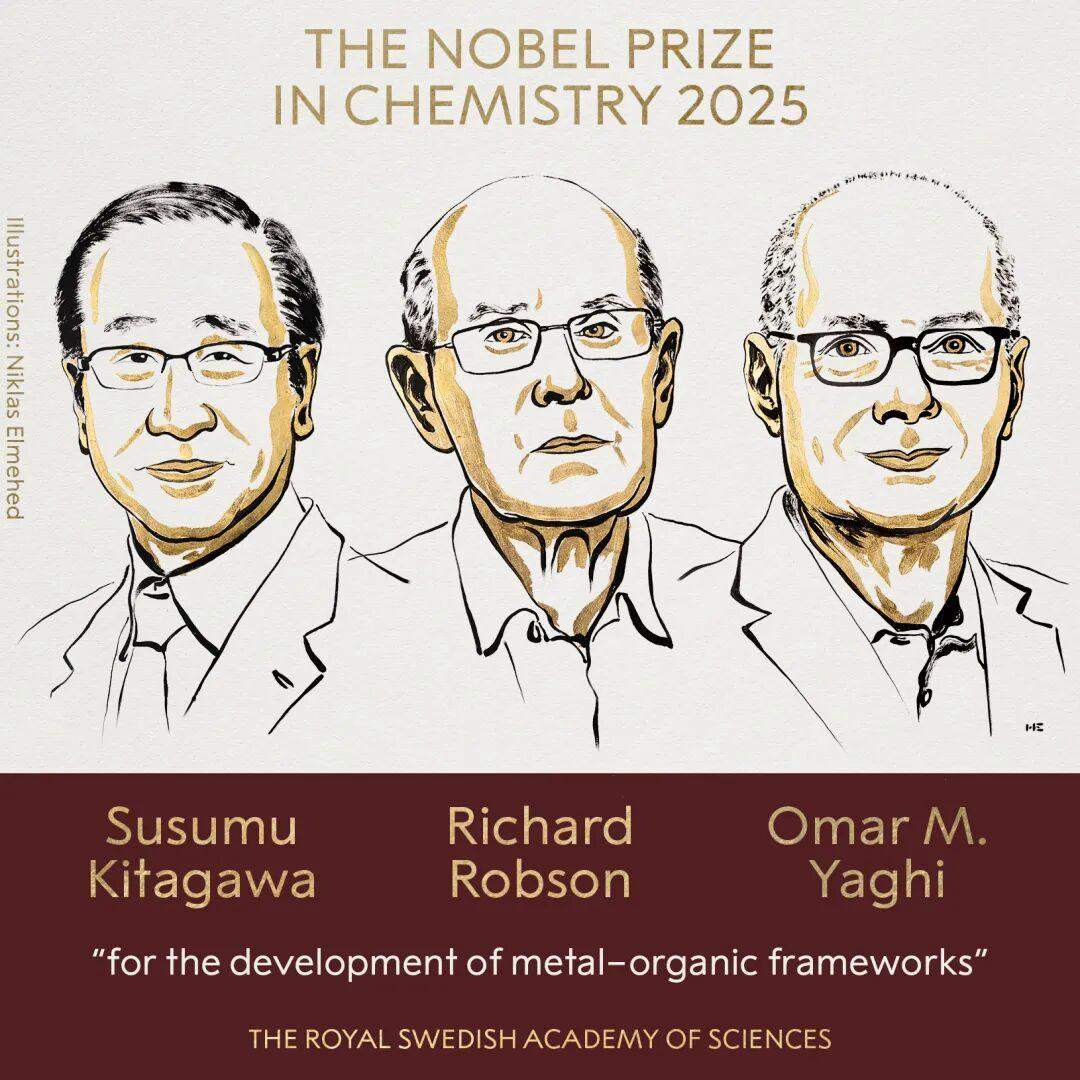2025诺贝尔化学奖:解锁“魔法材料”的储气体奥秘

The 2025 Nobel Prize in Chemistry has been awarded to Susumu Kitagawa, Richard Robson, and Omar M. Yaghi for developing porous materials that can store and release gases like carbon dioxide. These materials are called metal-organic frameworks (MOFs). “A small amount of this material is almost like Hermione’s handbag in Harry Potter,” said Heiner Linke, chair of the Nobel Committee for Chemistry. “It can store huge amounts of gas in a tiny volume.”
Tens of thousands of different MOFs have now been created. They have many potential uses, from capturing CO₂ in chimneys to cleaning up harmful chemicals and collecting water from the air.
In the late 1980s, Richard Robson in Australia was inspired by the ordered structure of diamonds to create the first MOFs. He realized that metal ions (金属离子) could be used as connecting points, linked together by carbon-based molecules (分子). When mixed, these components form ordered frameworks by themselves. While the spaces in diamond are small, those in MOFs can be much larger. However, the spaces in Robson’s early MOFs were filled with water.
Susumu Kitagawa from Japan first created a framework stable enough to be dried, and successfully filled the empty spaces with gas. “He showed that gases could be taken in and also released from the material,” said Olof Ramström, a Nobel Committee member. Kitagawa also developed MOFs that change shape when gases are added or removed.
Omar M. Yaghi in the U.S. created even more stable frameworks using groups of metal ions containing zinc and oxygen, along with certain linking molecules. “This framework is amazing because it remains stable even at 300 degrees Celsius,” said Ramström. “But even more remarkable is its enormous surface area. Just a few grams of this porous material, about the size of a sugar cube, has a surface area as large as a football field.” Yaghi also showed that the spaces in MOFs can be enlarged simply by using longer linkers (连接分子).
After these important breakthroughs, the field developed very quickly. “We see new metal-organic frameworks created almost every day,” Ramström said.
1. 1. According to the passage, what is the primary purpose of MOFs?(细节理解)
A To make gases liquid.
B To contain gases effectively.
C To create new materials.
D To replace other substances.
2. 2. What potential benefit of MOFs is highlighted in the passage?(细节理解)
A Generating electricity.
B Purifying polluted air.
C Creating new metals.
D Changing water form.
3. 3. What was the key limitation of Robson’s early MOFs?(细节理解)
A Too expensive to make.
B Too difficult to produce.
C Spaces filled with water.
D Unable to form structures.
4. 4. What makes Yaghi’s frameworks particularly remarkable according to the text?(细节理解)
A Extreme stability and large area.
B Low cost and high efficiency.
C Beautiful color and shape.
D Simple making process.

